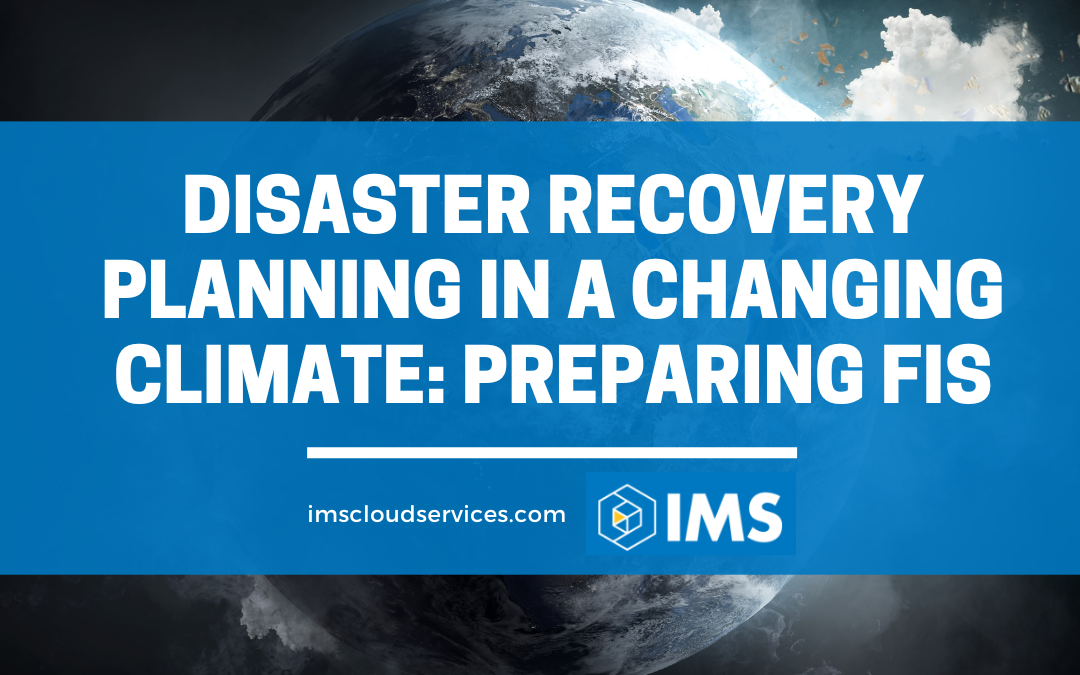In recent years, the world has witnessed an alarming increase in climate-related disasters. The data speaks volumes: a report from the National Oceanic and Atmospheric Administration (NOAA) highlighted that the United States experienced 28 separate billion-dollar climate disasters in 2023, with financial repercussions running into billions of dollars annually. For the financial sector, these aren’t just abstract numbers. The direct impact includes operational disruptions, data breaches, and an urgent need for robust disaster recovery solutions to safeguard operations and sensitive data.
The urgency for resilience in disaster recovery strategies has never been more critical, as these climate-induced events pose a substantial risk to the continuity of financial services. Let’s dive into the reasons why comprehensive disaster recovery is essential in today’s times:
Understanding Disaster Recovery Planning Solutions
The changing climate demands a proactive approach to disaster recovery, particularly for the backbone of our economy: financial institutions. This is where comprehensive disaster recovery services come into play, serving as a critical component in ensuring that banks, credit unions, and other financial entities can withstand and quickly rebound from the impacts of natural disasters. A resilient disaster recovery plan encompasses not just the restoration of data and systems but also a broader strategy designed to preserve operational integrity and customer trust amidst crises.
Modern disaster recovery solutions go beyond mere data backup; they integrate advanced technologies and methodologies to offer rapid, efficient, and comprehensive recovery processes. This includes automating recovery tasks, customizing recovery strategies to fit specific organizational needs, and conducting regular drills to ensure preparedness. The goal is clear: minimize downtime and operational disruptions while maximizing data protection and compliance with industry standards.
IMS is recognized for its commitment to providing worry-free disaster recovery solutions, tailored for the unique landscape of financial institutions. This dedication is aimed at empowering community banks and credit unions with resilient business continuity services, ensuring that these entities can withstand and quickly recover from any form of disruption.
Why Disaster Recovery Planning is Essential for Financial Institutions
Integrating disaster recovery within financial institutions is paramount for maintaining operational integrity and ensuring continuous service amidst the evolving economic and environmental landscape. This approach aligns with key insights from Davos 2024, where the emphasis on resilience, inclusivity, and sustainable finance in the financial sector highlighted the need for comprehensive strategies to tackle global challenges.
Effective disaster recovery plans enable institutions to swiftly respond to disruptions, safeguarding against potential revenue losses and upholding customer trust. By prioritizing these aspects, financial institutions can navigate uncertainties, leveraging technological advancements and strategic planning to foster long-term stability and growth.
The Pillars of IMS Disaster Recovery Solutions
IMS’s disaster recovery services are built on a foundation of comprehensive strategies and principles designed to meet the specific needs of financial institutions. These pillars include:
- Regulatory Compliance: Ensuring that disaster recovery solutions comply with industry standards and regulatory requirements, safeguarding institutions against legal and financial repercussions.
- Automated Recovery Processes: Adopting cutting-edge automation technology for rapid and efficient disaster response, minimizing downtime and operational disruptions.
- Enhanced Resilience: Protecting against a wide spectrum of threats through advanced security measures and technologies, securing the integrity and availability of critical data and systems.
- Customizable Recovery Plans: Offering tailored disaster recovery strategies that align with the unique requirements and operational frameworks of each institution, ensuring a perfect fit for their specific needs.
- Regular Recovery Drills: Conducting comprehensive drills to continuously test and refine disaster recovery plans, guaranteeing institutions are always prepared for any eventuality.
These core principles underline the importance of a proactive and strategic approach to disaster recovery, ensuring financial institutions can maintain operational continuity, protect sensitive data, and uphold customer trust even in the face of unforeseen disasters.
Thriving Amidst Climate Challenges with IMS Cloud Services
As climate-related disasters become more frequent, preparing with robust disaster recovery and business continuity plans is essential for financial institutions. IMS offers comprehensive disaster recovery solutions tailored to ensure rapid recovery with minimal operational downtime, safeguarding both data integrity and operational continuity.
Schedule a consultation with IMS today to learn how our disaster recovery solutions can fortify your institution against climate challenges, helping you maintain customer trust and operational resilience.

